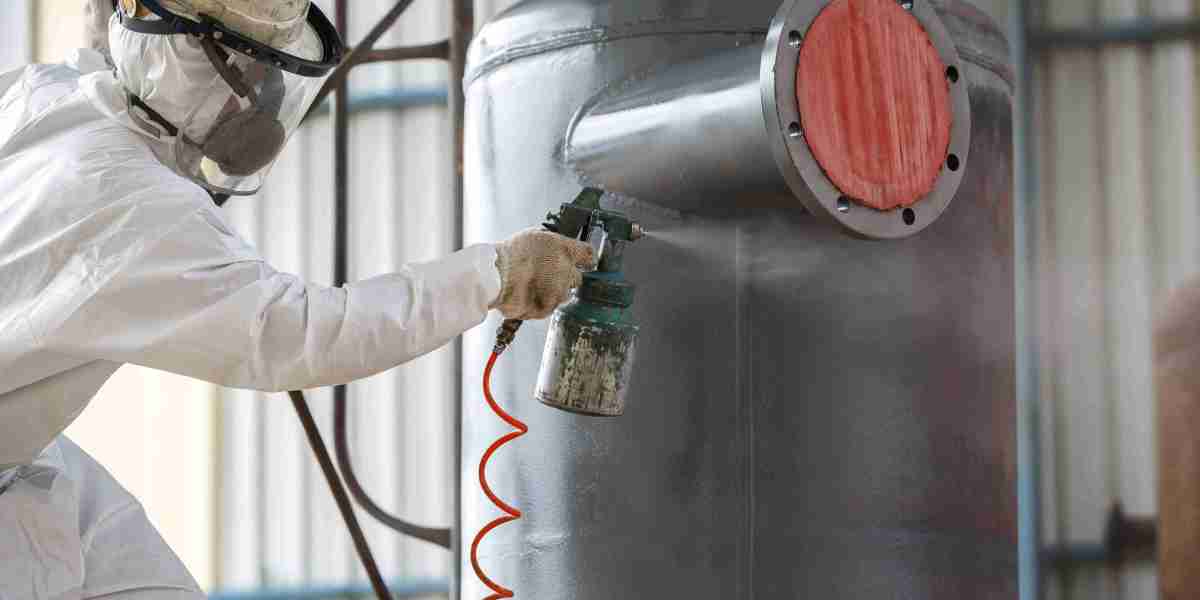Introduction
The industrial coating market is highly competitive, driven by rapid technological advancements, evolving customer requirements, and increasing environmental regulations. Leading manufacturers are deploying diverse strategies to strengthen their market positioning, including product innovation, mergers and acquisitions, regional expansions, and sustainability commitments. As industries such as construction, automotive, energy, and manufacturing seek advanced coating solutions, companies are intensifying their focus on differentiation, performance enhancement, and eco-conscious production. This article explores how top players are shaping the market landscape through competitive strategies and strategic market positioning.
Market Leaders and Competitive Dynamics
The global industrial coating market is dominated by several key players, including PPG Industries, AkzoNobel, Sherwin-Williams, Axalta Coating Systems, and BASF Coatings. These companies have established a significant presence across multiple regions and industries, offering a wide portfolio of protective, decorative, and functional coatings.
The market dynamics are marked by a continuous race to meet customer needs with cutting-edge technology, durability, environmental compliance, and customization. Smaller regional players are also making strategic moves to gain local market share, particularly in fast-growing economies such as India, China, and Brazil.
Key Competitive Strategies
1. Product Innovation and R&D Investments
Innovation remains at the core of competitive strategies in the industrial coating market. Leading companies are heavily investing in R&D to develop advanced formulations that offer benefits such as corrosion resistance, heat tolerance, and low-VOC emissions.
Smart coatings, including anti-fouling and self-healing technologies, are gaining traction.
Nanotechnology is being explored to improve coating functionality and efficiency.
Eco-friendly alternatives like waterborne and powder coatings are becoming more prevalent as sustainability takes center stage.
Companies that consistently launch new products or enhance existing ones can quickly adapt to market changes and gain a technological edge.
2. Mergers, Acquisitions, and Strategic Alliances
Consolidation through mergers and acquisitions has become a prevalent strategy among major players to broaden their product portfolios, enter new markets, and gain access to advanced technologies.
Sherwin-Williams' acquisition of Valspar and PPG's acquisition of Tikkurila are examples of high-impact moves that expanded market reach.
Strategic partnerships with technology firms, raw material suppliers, or regional distributors also help companies improve supply chain efficiency and accelerate innovation.
3. Geographic Expansion
To tap into high-growth regions, companies are increasing their presence in Asia-Pacific, Latin America, and the Middle East. These areas offer robust demand due to expanding industrialization, infrastructure development, and automotive manufacturing.
By establishing regional manufacturing facilities and R&D centers, companies reduce logistics costs and better serve local clients. Localization also helps in customizing formulations that suit specific environmental or industrial conditions.
4. Sustainability and Regulatory Compliance
With environmental regulations tightening globally, manufacturers are positioning themselves as responsible, eco-conscious brands. Many are aligning their operations with green initiatives and offering low-VOC, non-toxic, and biodegradable coatings to meet regulatory standards.
AkzoNobel and BASF have set ambitious goals to reduce carbon emissions and promote circularity in coatings production.
Certifications and compliance with standards like REACH, EPA, and LEED are also used as market differentiators.
5. Customer-Centric Customization and Technical Support
Companies are emphasizing customer service by offering tailored coating solutions and application support. Providing value-added services such as technical training, on-site assistance, and custom formulations enables manufacturers to build long-term client relationships and enhance brand loyalty.
Market Positioning Strategies
Effective market positioning in the industrial coating sector involves both functional value delivery and brand differentiation. Leading companies differentiate themselves in several ways:
Performance Leadership: Emphasizing superior durability, corrosion resistance, and performance in extreme environments.
Sustainability Leadership: Highlighting green credentials and commitment to environmental responsibility.
Cost Efficiency: Offering high-performance coatings at competitive prices, often targeting cost-sensitive markets.
Technology Edge: Promoting proprietary technologies, smart coatings, and digital solutions for application efficiency.
Brand reputation, global presence, and after-sales support further solidify the position of top players, helping them command premium pricing and secure large-scale contracts.
Challenges and Opportunities
While the competition is intense, opportunities abound in areas such as:
Growing demand for automated and robotic coating applications.
Emerging sectors like renewable energy and electric vehicles needing new protective solutions.
Expanding interest in data-driven performance monitoring and smart materials.
Challenges include volatile raw material costs, supply chain disruptions, and regulatory uncertainties, which require strategic agility and long-term planning.
Conclusion
The industrial coating market landscape is defined by fierce competition, technological innovation, and growing demand for sustainable solutions. Leading manufacturers are implementing strategic investments in R&D, expanding into emerging markets, and aligning with global sustainability standards to strengthen their competitive positioning. As market dynamics evolve, companies that prioritize customer needs, regulatory compliance, and product innovation will remain at the forefront of this fast-growing industry.




